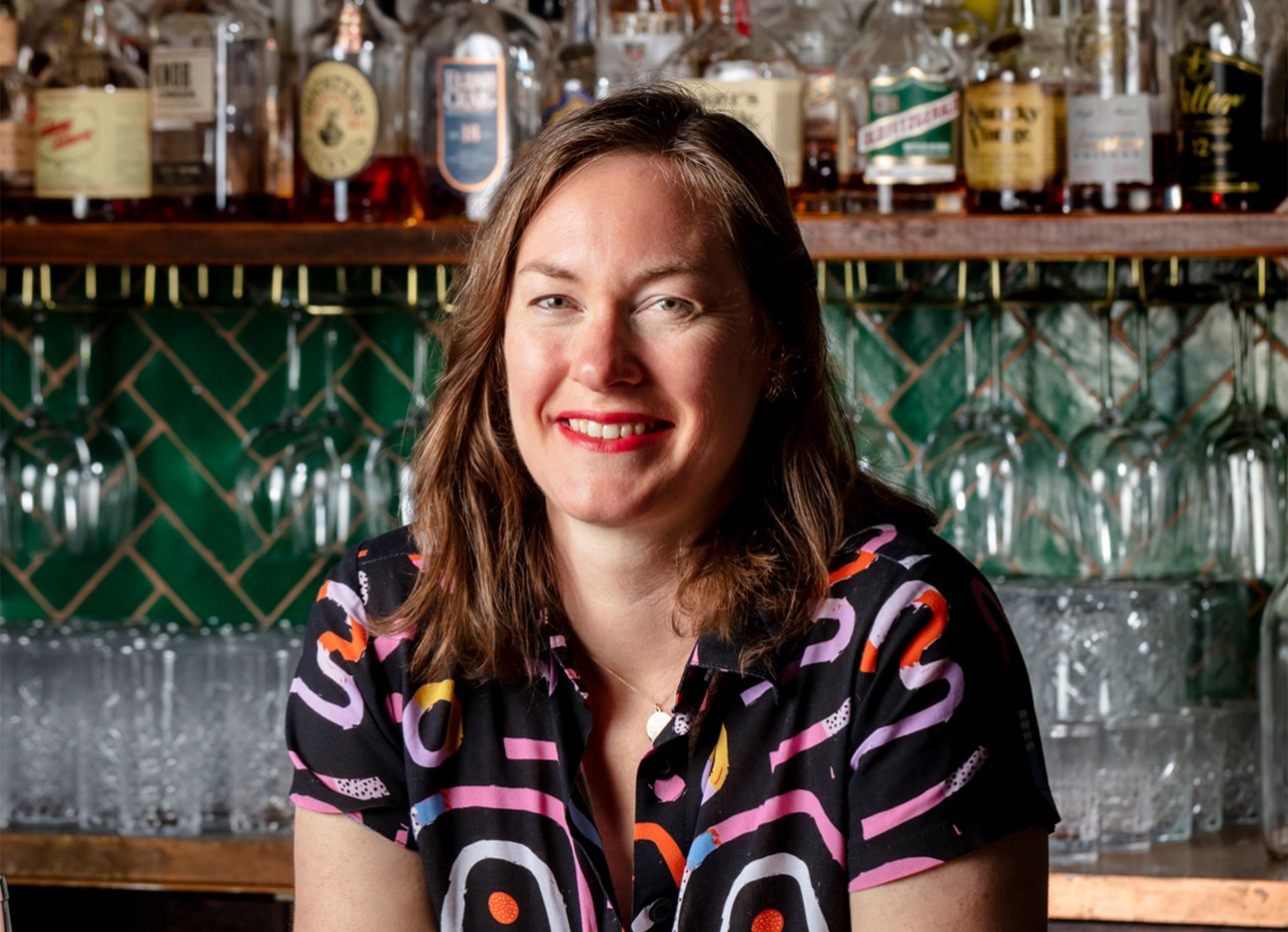
The Spirit Brands and Bar Owners Redefining a “Good Drink”
As a bartender in San Francisco, a city at the forefront of the farm-to-table movement, Shanna Farrell wondered why the environmental awareness devoted to food never quite extended to drinks. She went in search of the answer through her new book, A Good Drink: In Pursuit of Sustainable Spirits (Island Press), in which she documents her travels to bars, distillers, and farms that are forging a more sustainable path forward for spirit-making. Farrell—who currently works as a writer, audio producer, and interviewer at the University of California Berkeley’s Oral History Center—puts her incisive journalism skills to use in every site she visits. She meets distillers in South Carolina who are saving a scarce type of corn from near extinction and using it to make one of the world’s most sought-after bourbons, and travels to Guadalajara, Mexico, to visit mezcaleros who produce the spirit using time-honored traditions that preserve an important part of the country’s culture as well as the health of the land. In London, she encounters a bar owner whose establishment is redefining luxury drinking by prohibiting the use of ice and bottles.
Elsewhere, Farrell outlines the environmental dangers lurking behind our drinks, including the crops used to make them, which are often treated with chemicals that can cause pesticide resistance and pollute waterways, and the bars where they’re served, which typically produce staggering amounts of trash. But she also celebrates the genuine pleasures that are available to our palates when sipping on an environmentally conscious concoction. We recently spoke to Farrell about the steps both spirit enthusiasts and spirit-makers should be taking to make a “good drink” the norm.
How might someone learn about the impact that their favorite tipple has on the planet?
Think of your regular bar like a bookstore, and start by asking the bartender where the spirit brands you prefer come from and how they’re made. You can also look on distillers’ websites. If you’re near your favorite distillery, go on a tour and ask questions. Bartenders and bar owners need to get educated about what they serve, and be willing to make tough financial decisions that reflect their ethos. Liquor-store owners must also speak up and demand that the brands from their distributors only use non-G.M.O. ingredients from farmers that practice responsible intercropping, [growing two or more crops in close proximity]. Monocropping [growing a single crop on the same land year after year], which is currently practiced on more than half of all U.S. farmland, strips the soil of nutrients and leaves crops vulnerable to disease; it most often relies on pesticides and chemical fertilizers, too.
Beyond the calculable environmental benefits, what are other advantages to consuming drinks that are produced with the earth in mind?
The most compelling is one you can taste in the flavor of spirits like High Wire’s Jimmy Red Corn Bourbon, a labor of love that started to save a specific variety of corn from extinction. It’s sourced from small farms and heirloom varietals. This, however, means that our spirits may taste slightly different every year, like wine. So our expectations as consumers need to change.
What kind of changes need to happen on an industry level?
We need increased education and collaboration, especially with the food movement, to help protect the crops that go into making alcohol. Spirits is not a static industry, and change is definitely possible. Another shift would be for the Food and Drug Administration to regulate alcohol, which is currently overseen by the Alcohol and Tobacco Tax and Trade Bureau, or T.T.B., a taxation-based arrangement that traces its origins to Prohibition, and one I don’t see changing anytime soon.
What spirit brands or bar owners are making particularly noteworthy progress in the movement toward producing spirits in more environmentally aware ways?
There are players making inroads all over the world. I think of Singapore’s Proof & Company, which helps bar and restaurant owners build responsible spirit collections and cocktail menus, and people like Pedro Jiménez Gurría, who founded Mezonte, an N.G.O. dedicated to preserving Mexico’s traditional agave culture and [that] inspires others to think about how the crops that go into our drinks embody that region’s history, culture, economics, and environment. Bar owners like Ryan Chetiyawardana of London’s White Lyan and Dandelyan bars lead by example, showing how to run a successful bar that is also environmentally conscious. CocktailGreen.org is a useful website with information on sustainability for bars and bartenders, but up to now, there is no “World’s Best Green Bars” website. Someone should definitely make one.
Do you think it’s possible to produce sustainable spirits on a global scale?
In the book, I dedicate a whole chapter to scale as a way to call attention to the disconnect between rising demand and the pressures on our natural resources. Production of tequila, made in Mexico from the agave plant, has increased by almost two hundred and thirty-seven percent over the past two-and-a-half decades, and has forced farmers to turn to industrial practices, which sacrifice water quality and soil health.
The change in that example has to do with farming, but there are other smart ways to scale up, too. I detail [some of them] by sharing the strategic planning challenges faced by brands like St. George Spirits, which produces single-malt whiskey, absinthe, gins, vodkas, brandies, and liqueurs inside a massive former airplane hangar in Alameda, California. Having grown his company fivefold since 1982, its founder, Jörg Rupf, and master distiller, Lance Winters, are thinking creatively about what comes next—as are Colorado’s Leopold Bros., who want to remain independently owned and make spirits that represent their values and the region where they produce. Across the industry more broadly, forcing some transparency, such as a comprehensive ingredients list on spirit bottles, would certainly go a long way to help.